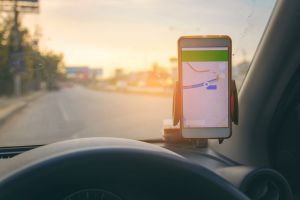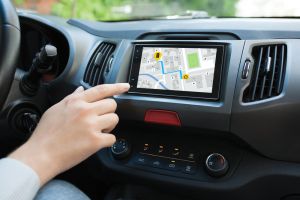With more and more people relying on smartphone GPS apps for their travels, data is subsequently being consumed at higher rates, which can either leave you without any data, or a pricier phone bill if you go over your monthly limit. Learn all you need to know about Google Maps data usage with this Canstar Blue guide.
On this page
How much data does Google Maps use?
Google Maps uses around 0.73MB of data per 20 minutes of use, meaning if you’ve got an hour-long road trip planned, you can expect to use about 2.19MB of data. However, factors such as service provider, the type of device you’re using, as well as what additional settings you may have set on your phone may also impact the overall data usage.
The table below should give you an idea on how much data you’ll be using to get to your destination with Google Maps.
| Minutes on Google Maps | Mobile Data Used |
|---|---|
| 10 | 0.37MB |
| 20 | 0.73MB |
| 40 | 1.46MB |
| 60 | 2.19MB |
Nailing down the exact figure for how much data Google Maps uses is ultimately dependent on how you’re using the app. If you’re zoomed in to track your journey in real time (and you want to see what landmarks and places are on the way), you’ll use more data as more information is needed to be passed on. If you’re using the top-down ‘Satellite’ view – where you just see your arrow and the stretch of road, you’re on – you’ll use less data. However, there’s no official word from Google on how much data Google Maps actually uses.
Can you use Google Maps offline?

A benefit of Google Maps is its ability to download and save maps for offline navigation, meaning you can download your journey using your home Wi-Fi before you step out the door. This comes in handy when you’re looking to save data, but you’ll also be without live traffic updates, which may impact on your travel time.
Can you use Google Maps on iPhone?
iPhone users are now able to choose Google Maps as their preferred GPS system, provided that you’re operating with at least the iOS 14+ and an up-to-date Google Maps app. The Google Maps app is available to download from the Apple App Store.
Can I connect Google Maps to my car?

With plenty of vehicles now incorporating infotainment units for extra driver comfort, you can connect Google Maps to your car via Bluetooth. To connect Google Maps to your vehicle, you’ll need to pair your phone or tablet to your car, then set your car’s audio source to Bluetooth. Open the Google Maps Menu Navigation Settings on your phone and switch on the ‘Play Voice over Bluetooth’ option to use your car for directions.
Google Maps Compatible Devices
- iOS: Google Maps is supported on iOS 14 and above for iPhone and iPad.
- Android: Google Maps is supported on Android 6.0 and above.
- Computer/PC: Google Maps is supported on Mac OS 10.12.0 and up, Windows 7 and up, Linux, as well as Chrome OS with an Intel CPU.
Google Maps data usage
While Google Maps remains a go-to for many looking to navigate via phone, the data it uses can add up if you’re not careful. Downloading maps offline when preparing to set off may be a wise option when you want to save data, provided you don’t mind flying dark when it comes to the traffic conditions. If you’re really worried, you can always purchase a GPS navigator, but if you’ve got plenty of data to spare, there’s no harm in using Google Maps to get you where you need to be.
Here is a selection of postpaid plans from Canstar Blue’s database with a minimum of 10GB of data, listed in order of standard cost, lowest to highest, then by data allowance, largest to smallest. Use Canstar Blue’s phone plan comparison tool to see a wide range of plans on offer from mobile providers. This table includes products with links to referral partners.
Here is a selection of prepaid plans from Canstar Blue’s database with a minimum of 10GB of data, listed in order of standard cost, lowest to highest, then by data allowance, largest to smallest. Use our comparison tool to see a wide range of plans from other providers. This table includes products with links to referral partners.
Photo Credit: I AM NIKOM/shutterstock.com, CC7/shutterstock.com, Denys Prykhodov/shutterstock.com



Share this article